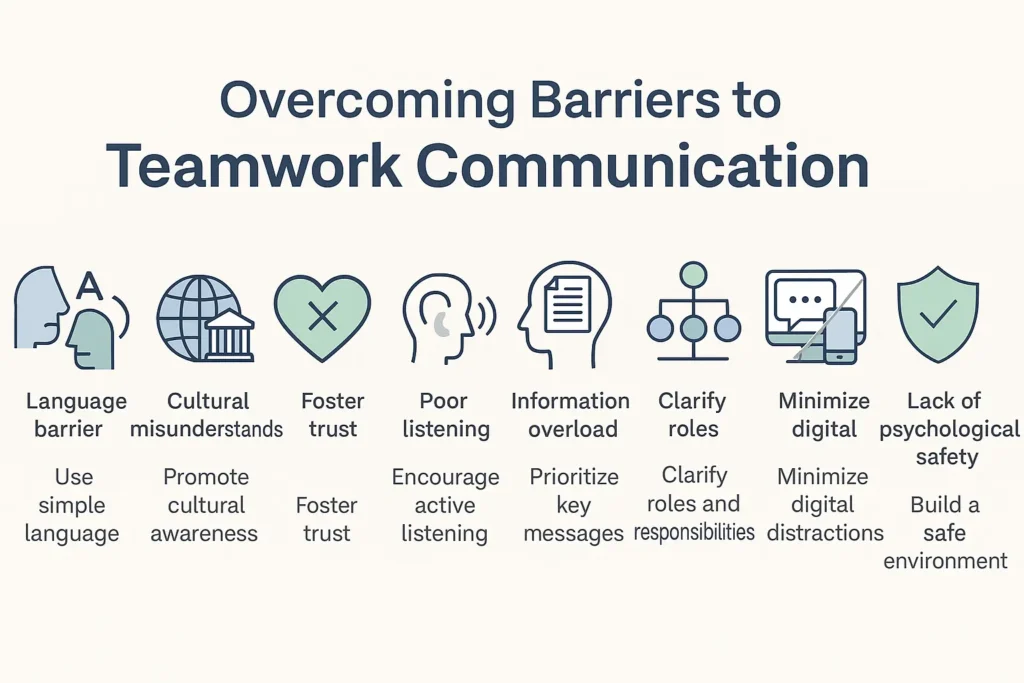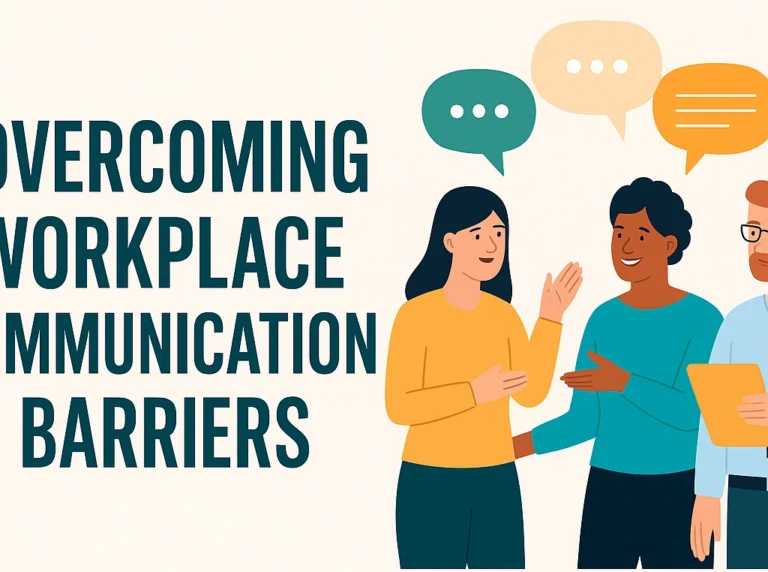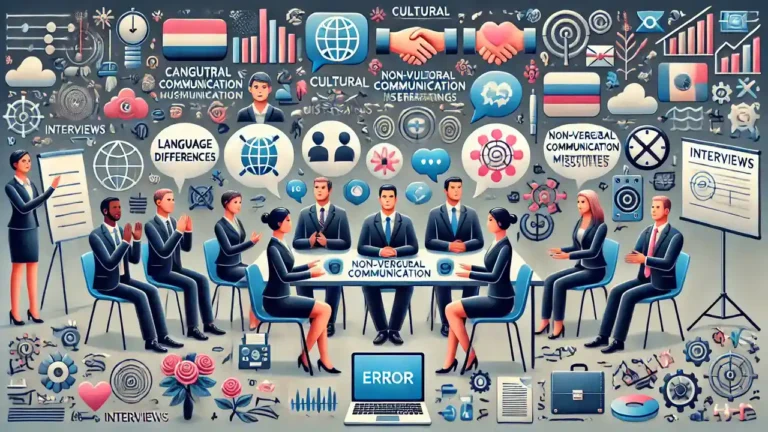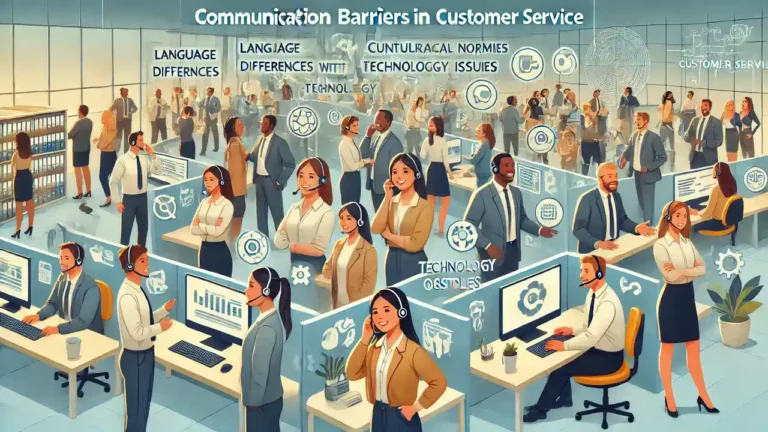Barriers to Teamwork Communication
Have you ever been on a team where, no matter how hard you tried, something just kept getting lost in translation? Maybe it was a missed deadline, an unresolved conflict, or simply the feeling that some people weren’t speaking up. Communication is the glue that holds every team together—but it’s also the number one thing that can break teams apart. So, what exactly stands in the way of smooth teamwork communication, and more importantly, how can you fix it? Let’s explore the most common obstacles, the impact they have, and practical solutions you can start using today.
Understanding Teamwork Communication
Effective teamwork communication is more than just exchanging information. It’s about making sure everyone understands the message, feels included, and knows their role. Good communication keeps projects moving, boosts morale, and builds trust among team members. But when barriers arise, even the best teams can struggle.
Think about a team meeting where people talk over each other or when an email gets misinterpreted because of poor wording. These moments might seem small, but over time, they add up, slowing progress and even causing conflict.
What Are Barriers to Teamwork Communication?
Barriers to teamwork communication are anything that gets in the way of a clear, open exchange of ideas within a team. These can include language differences, lack of trust, poor listening habits, unclear roles, and even cultural misunderstandings. Left unchecked, these obstacles can derail projects, damage relationships, and lower productivity.
Common Barriers to Teamwork Communication

Let’s break down the most frequent obstacles teams face, using simple examples and research-backed explanations.
Language Differences and Jargon
When team members speak different native languages or rely on specialized jargon, misunderstandings can happen. This is common in global teams or cross-functional projects where technical language may be second nature to some but confusing to others.
Cultural Misunderstandings
Culture influences how people communicate. What’s considered polite, assertive, or even respectful varies widely. For example, some cultures value directness, while others prefer subtlety. If these differences aren’t acknowledged, team members might misinterpret intentions or take offense.
Lack of Trust
Trust is the foundation of any strong team. When team members don’t trust each other—or their leaders—they’re less likely to share ideas, ask questions, or admit mistakes. This can lead to information hoarding and groupthink.
Poor Listening Skills
Sometimes, the problem isn’t what’s said but what’s heard. Team members who interrupt, get distracted, or simply wait for their turn to speak often miss important points. This leads to repeated mistakes and unresolved issues.
Unclear Roles and Responsibilities
If no one knows who’s supposed to do what, things fall through the cracks. Ambiguity breeds frustration and finger-pointing, especially under tight deadlines.
Information Overload and Poor Information Management
Too many emails, notifications, and updates can overwhelm even the most diligent team member. When information isn’t organized or prioritized, important messages get lost.
Tip: Agree on primary channels for critical communication, use shared documents, and keep meetings focused.
Remote Work and Technology Gaps
Virtual teams face unique hurdles: video call fatigue, time zone confusion, and the absence of non-verbal cues. Not everyone is equally comfortable with technology, and technical glitches can stall progress.
Psychological Safety and Fear of Speaking Up
If team members worry about being judged or punished for speaking their minds, they’re more likely to stay silent—even when something’s wrong. This can stifle creativity and lead to poor decision-making.
The Impact of Communication Barriers on Teams
Barriers to teamwork communication don’t just slow down projects. They also hurt team morale, increase turnover, and can even affect a company’s bottom line. A study by Salesforce found that 86% of employees and executives blame lack of collaboration or ineffective communication for workplace failures.
Effects on Productivity
Missed messages and confusion waste time. Tasks get duplicated, deadlines are missed, and work quality drops.
Effects on Team Relationships
Misunderstandings lead to frustration, resentment, and sometimes open conflict. Over time, this erodes trust and makes it harder for teams to work together.
Effects on Innovation
When only a few voices are heard, good ideas get missed. Diversity of thought drives innovation—but only if everyone feels comfortable sharing.
How Leadership and Team Culture Influence Communication
Leaders set the tone. Teams that communicate well often have leaders who listen, clarify expectations, and create space for everyone to contribute. Leaders who “walk the talk” by being open and accessible help break down barriers.
Establishing Team Norms
Agreeing on ground rules—such as how meetings are run, when updates are sent, and how feedback is given—reduces confusion. These norms help team members know what to expect and how to engage.
Building Trust and Inclusion
Inclusive teams, where everyone feels valued, naturally communicate better. Encourage regular check-ins, celebrate cultural differences, and make it easy for people to ask for help.
Tools and Technology for Better Teamwork Communication
Modern teams have access to countless tools—Slack, Zoom, Microsoft Teams, Google Workspace, and many more. But simply having these tools isn’t enough. Teams need to choose the right platforms, avoid “tool overload,” and make sure everyone knows how to use them.
Choosing the Right Tools
Pick one or two primary tools for messaging, video calls, and file sharing. Too many platforms create confusion.
Training and Support
Offer training for new tools and regular refreshers. Appoint “tech champions” who can answer quick questions.
Managing Digital Overload
Set expectations around response times. Use features like “Do Not Disturb” and mute channels to help people focus.
Overcoming Barriers
Encourage Active Listening and Feedback Loops
- Repeat back what you’ve heard.
- Ask clarifying questions.
- Use feedback surveys to check for understanding.
Clarify Roles and Expectations
- Document team roles.
- Share project roadmaps.
- Use visuals and flowcharts to outline workflows.
Foster a Culture of Trust
- Admit mistakes and learn from them.
- Encourage risk-taking and creative suggestions.
- Handle conflicts openly and constructively.
Embrace Diversity and Inclusion
- Recognize and celebrate cultural differences.
- Provide language support where needed.
- Use inclusive language in all communications.
Optimize Technology Use
- Standardize on a few key tools.
- Provide tech support and ongoing training.
- Keep up with updates and security best practices.
Support Remote and Hybrid Teams
- Schedule meetings across time zones.
- Use video judiciously—sometimes audio or chat is better.
- Hold virtual “water cooler” chats to build connection.
Measuring and Improving Team Communication
Great teams review and refine their communication habits regularly. Try anonymous surveys, after-action reviews, or quick “pulse checks” after big projects.
Metrics to Track
- Meeting effectiveness scores
- Task completion rates
- Employee engagement and retention
Conclusion
Breaking down barriers to teamwork communication is an ongoing process—but it’s worth it. Teams that invest in open dialogue, trust, clear roles, and inclusive practices see better results, happier employees, and stronger business outcomes. Start by recognizing your team’s unique challenges, try some of the strategies above, and don’t be afraid to ask for feedback.






